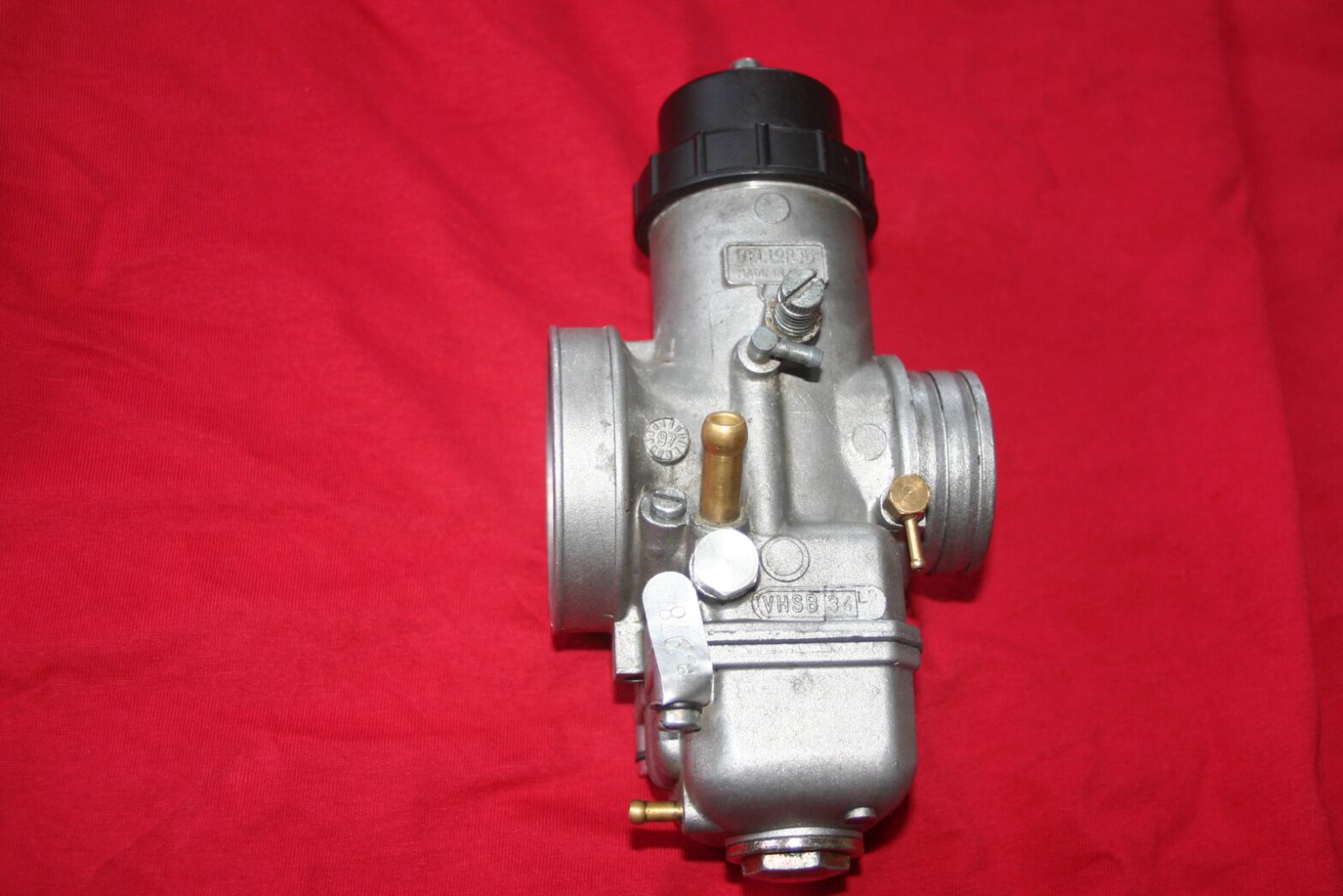Please note: These pages are part of my RS 125 Workshop Page on my web blog and they are not related to the manufacturer Aprilia/Piaggio. These are self-written repair instructions, hints, tips and tricks for the old Aprilia RS 125 with two-stroke engine until year 2012. This blog is operated by a private individual without commercial background and without any benefits. There is absolutely no warranty. Any liability for any kind of damage that may be related to information from this website is totally denied. Use at your own risk.
Since around 1998, a 28 mm carburetor has been installed in the RS 125 as standard (Dell Orto PHBH 28 BD or VHST 28 CD). The intake manifold to the reed valve system also has a corresponding diameter.
The carburetor is a component that must not be a bottleneck when it comes to increasing performance, of course. On a stock RS, the 28 mm carburetor is sufficient. Only if other components have been changed (e.g. a different resonance exhaust) and power peak is expected at higher rpm or a big bore cylinder has been installed, a larger carburetor will make an impact.
With the 28 mm carburetor, an engine performance of up to 26 kW (35 hp) is possible.
Bikes until 1997 with the Rotax 123 and also a few with the Rotax 122 had the 34 mm DellOrto carburetor VHSB 34 as stock. There are always rumors that the old models with the 34 carburetor also had 34 hp (25 kW), but this is simply wrong. The old GS models with the Rotax 123 and the 34mm carburetor had 23 kW (that’s 31.2 hp), the first MP models with the 34mm carburetor had 20 kW, and then the models with the 28mm carburetor had 22 kW again.
Upgrading to 34 mm carburetor
There are reasons for upgrading to a 34 mm carburetor. In general, the higher cross-section means that there will be less pressure loss at high volumes at high speeds, which is necessary for high performance at high speeds. The Rotax Max DD2 kart engine also uses a 34mm carburetor. For 34 mm there is a suitable intake manifold for the original reed vakves or even complete aftermarket reed valve systems.
However, a change from 28 to 34 mm also brings considerable disadvantages:
- Carburetor setup in low engine speed ranges is much more difficult and very time-consuming.
- If the setup does not work well, the engine runs considerably bad in low rpm ranges.
- Mixture formation and transport of the gasoline-air mixture in low speed ranges is worse because of the low flow velocities.
- Fuel consumption increases significantly.
It is widely used to change to the Dell-Orto flat slide carburetor VHSB 34 LD, which was installed by factory until about 1998.
There are various manufacturers of suitable carburetors (Mikuni, Keihin, Polini, …), since there was the Dell Orto VHSB 34 already with the old machines, you can fall back to the setup of the old models and all connections are suitably available (matching diameter, cold start boost, oil pump connection). For newer models with vacuum fuel tap (from 2006), a connection for the vacuum fuel tap must be retrofitted.
Along with increasing the cross-section of the carburetor, it also makes sense to increase the cross-section of the air filter intake; the original air intake has a smaller cross-section than the 34 mm carburetor.
In general, tuning a carburetor is not a problem and can be done, but it requires a lot of patience and a whole set of jets and possibly also different gas slides. The fact that this effort is completely underestimated is shown to me by many entries in web forums about problems at low revs or the mails I get from people who have difficulties with carburetor tuning. Therefore, I can only point out at this point: Be aware that a larger carburetor brings a significant additional effort in the tuning with it and that this is not done just by changing one or two jets.
If you now consider that you can also achieve 35 hp with the 28 mm carburetor and the disadvantages mentioned here may occur when doing such an upgrade, you can definitely question the whole thing.
In everyday use, an RS 125 is not driven with the rpm gauge in the red section. For road traffic use, in my personal opinion, a smooth-running engine with sufficient power in all speed ranges is much more suitable than a conversion that can only to be driven starting with 9.000 1/min.
Another argument for the conversion from 28 to 34 mm is of course the fun of such builds, of course it always remains a matter of personal taste.
Please note: Changing the carburetor might void your vehicles licence, log-book or registration, depending on your local laws. In the European union, any unapproved changes made on the carburetor system without proper certification will void the homologation of the bike.
